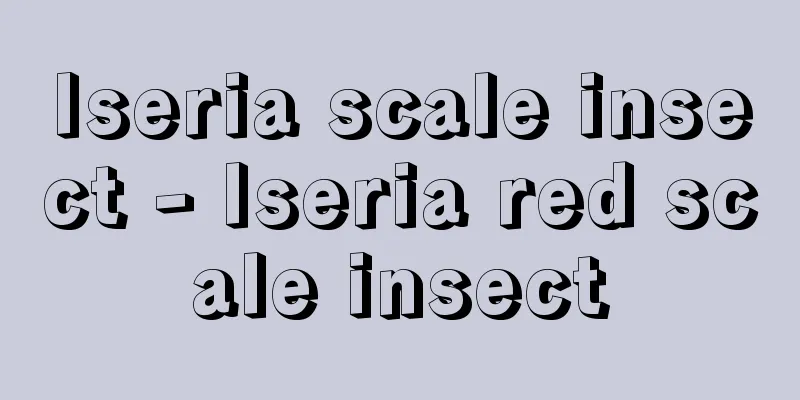Taste sensation

|
Taste is the sensation that occurs when a taste solution is detected by the taste organs. Taste is not only important for the selection of food and drink and for enjoyment, but is also important for maintaining life. Mice that have had their adrenal glands removed have a lower NaCl (sodium chloride) concentration in their blood, so they selectively ingest NaCl. Furthermore, if the taste nerves are severed, the selective intake of NaCl stops and the mouse soon dies. Human newborns already have the ability to distinguish between different tastes, and can ingest sweet substances but reject bitter and sour substances. Taste is involved in regulating the secretion of saliva, gastric juice, pancreatic juice, and bile, and is also biologically significant in maintaining the homeostasis of the internal environment. [Toshihide Sato] Basic tasteAlthough the tastes that foods produce appear to be extremely diverse, they are thought to be made up of several basic tastes (primitive tastes). The four basic tastes are sweet, sour, bitter, and salty. German psychologist Henning H. Henning placed the four basic tastes at the vertices of a tetrahedron, and believed that various tastes could be represented by a single point on its face or within it (1921). This is called the "taste tetrahedron." When tasting food, not only taste is involved, but also smell, touch, temperature, and the like, and the combined sensations of these are called "flavor." Sweet substances are often found in sugars, alcohol, and glycerol that have OH groups (hydroxyl groups), but some, such as saccharin, do not have OH groups. Sweet substances have a common hydrogen donor group and a hydrogen acceptor group, which are 2.5 to 4 angstroms apart. Sourness is the taste of hydrogen ions, but anions also affect it. Even with the same hydrogen ion concentration (pH), the strength of acids is in the following order: acetic acid > formic acid > lactic acid > nitric acid > hydrochloric acid. Bitter substances are often found in inorganic compounds such as MgCl 2 (magnesium chloride), and representative organic compounds are alkaloids such as brucine and caffeine. The relationship between bitter substances and chemical structure is unknown. A representative salt with a salty taste is NaCl. NaCl, KCl (potassium chloride), NaI (sodium iodide), etc. have different tastes, because the saltiness depends on both the cations and anions of the salt. Taste sensation occurs mainly on the tongue, but also on the soft palate, pharynx, and larynx. The minimum concentration of a taste substance that can be distinguished from water is called the "detection threshold," and the minimum concentration at which a taste can be detected is called the "recognition threshold." There are differences in sensitivity to the four basic taste substances on each part of the human tongue and soft palate. In 1974, American psychologist V.B. Collings published the results of his measurements, which showed that "the saltiness and sweetness thresholds are lowest on the tip of the tongue, the sourness threshold is lowest on the tongue edge, and the bitterness threshold is lowest on the soft palate. However, when the concentration of the stimuli is increased, the four basic tastes are produced in all parts of the body." Phenylthiocarbamide (PTC) is a bitter substance, but in a small number of people, it only tastes bitter at high concentrations. People who are insensitive to PTC and related substances are called "PTC taste blind." It is seen in about 10% of Japanese people and is inherited as a Mendelian recessive trait. The taste threshold changes with the temperature of the taste solution. The temperature at which the lowest threshold is observed varies depending on the taste quality, but is generally between 22 and 32 degrees Celsius. [Toshihide Sato] Taste receptorsThe receptors for taste are taste cells. In insects, taste cells are contained in sensory hairs on the tarsus, mouthparts, and antennae of the legs. In vertebrates, taste cells are found in taste buds, generally found in the tongue, soft palate, pharynx, and larynx of the oral cavity, but also on the body surface and baleen in fish. In mammals, taste buds are concentrated in the oral cavity, and are found mainly in fungiform, foliate, and circumvallate papillae scattered on the tongue. [Toshihide Sato] Taste transmission pathwayThe nerves that transmit taste are the facial nerve (cranial nerve VII), glossopharyngeal nerve (cranial nerve IX), and vagus nerve (cranial nerve X). Afferent nerve fibers from taste buds in the anterior two-thirds of the tongue reach the facial nerve via the lingual nerve and chorda tympani nerve. The glossopharyngeal nerve innervates taste buds in the posterior third of the tongue, while the vagus nerve innervates taste buds in the hypopharynx and epiglottis. Taste in the soft palate is transmitted to the facial nerve by the great superficial petrosal nerve, a branch of the facial nerve. These three nerves synapse (nerve junction) in the nucleus tractus solitarii in the medulla oblongata ( ). The conventional theory of taste transmission was that the second-order neurons then join the medial lemniscus on the same side, enter the posteromedial ventral nucleus of the thalamus (gustatory area of the thalamus) and switch to third-order neurons before reaching the gustatory area of the cerebral cortex (frontal opercular region). However, recent studies on rats, hamsters, cats, rabbits, etc. have revealed that the gustatory relay nucleus (pontine gustatory area) is located in the connective arm of the dorsal part of the pons between the nucleus of the solitary tract of the medulla oblongata and the gustatory relay nucleus of the thalamus. Some of the third-order neurons from this pontine gustatory area go to the cerebral cortex via the thalamus, while others do not reach the thalamus and project to the amygdala nucleus on the ventral frontal region, the stria terminalis, the hypothalamus, etc. ( ). The former pathway is a cognitive projection pathway that distinguishes tastes, while the latter pathway is thought to be a pathway for making emotional judgments that cause food and drink intake or aversion behavior. In monkeys and possibly humans, gustatory neurons from the solitary nucleus travel directly to the gustatory relay nucleus of the thalamus, and then project from there to the frontal-opercular part of the gustatory cortex of the cerebral cortex. [Toshihide Sato] Taste discrimination mechanismThe neural information conveying the intensity of taste quality is the impulse frequency of the gustatory nerve. However, most single taste cells respond (generate receptor potentials) to more than one of the four basic taste fluids, so there are no taste cells that exclusively convey information for each taste quality. Furthermore, when comparing the responsiveness of primary gustatory neurons and central gustatory neurons in the medulla oblongata, pons, thalamus, and cerebral cortex, there is no evidence that the selective sensitivity of neurons to various taste stimuli increases as one moves from low to high order neurons. In other words, single neurons in all regions show diverse sensitivities. American physiologist Erickson RP Erickson and others proposed the idea that "taste information is transmitted by spatial patterns of excitation of many neurons in all neurons, from low to high" (1965). This idea that substances with similar tastes produce similar excitation patterns is called the "across-neuron response pattern theory." On the other hand, it has been proposed that gustatory neurons are classified into four groups based on which of the four basic taste fluids they show the maximum response to, and that information on the four basic taste fluids is transmitted through four independent types of nerve fiber channels. This is called the "fixed line theory." Analysis based on this idea has revealed that there are excitation transmission channels corresponding to each taste, from the periphery to the cerebral cortex. It has also been found that within the cerebral cortical taste area, the projection sites corresponding to each channel are relatively different. Therefore, it is reasonable to assume that both the across-neuron response pattern method and the fixed line method are involved in the mechanism of distinguishing a wide variety of tastes. [Toshihide Sato] "Taste" by Kenzo Kurihara (1978, University of Tokyo Press)" ▽ "The Science of Taste" edited by Masayasu Sato (1981, Asakura Publishing) [Reference] |©Shogakukan "> Henning's Taste Tetrahedron ©Shogakukan "> Taste transmission pathway (peripheral) (Figure A) ©Shogakukan "> Taste transmission pathway (central) [Figure B] Source: Shogakukan Encyclopedia Nipponica About Encyclopedia Nipponica Information | Legend |
|
味覚器によって味溶液が検知された結果、生起される感覚を味覚という。味覚は単に飲食物の選択や享楽にのみ意義があるのではなく、生命維持のうえからも重要である。副腎(ふくじん)を摘出されたネズミは、血中のNaCl(塩化ナトリウム)濃度が低下するため、NaClを選択的に摂取する。また、味神経を切断すると、NaClの選択的摂取は停止し、ネズミはまもなく死んでしまう。ヒトの新生児は、すでに味質を識別する能力をもち、甘味物質は摂取するが、苦味や酸味物質は拒否する。味覚は唾液(だえき)分泌、胃液分泌、膵液(すいえき)分泌や胆汁(たんじゅう)分泌などの調節に関与し、内部環境の恒常性維持のうえからも生物学的意義がある。 [佐藤俊英] 基本味食物によっておこる味覚は多種多様のようであるが、それはいくつかの基本味(原味)から構成されると考えられている。基本味は甘味、酸味、苦味および塩味(えんみ)(鹹味(かんみ))の四つである。ドイツの心理学者ヘニングH. Henningは、4種の基本味を四面体の頂点に置き、種々の味はその面上または内部の1点で表現できると考えた(1921)。これを「味覚の四面体」という。食物を味わうときは、味覚のみならず、嗅覚(きゅうかく)、触覚、温度感覚なども関与するが、これらの総合した感覚を「風味」という。 甘味物質はOH基(ヒドロキシ基)をもつ糖類、アルコール、グリセロールなどに多いが、なかには、サッカリンのようにOH基をもたないものにもある。甘味物質には共通して水素供与基と水素受容基が存在し、互いに2.5~4オングストローム離れているという。酸味は水素イオンの味であるが、陰イオンも影響を与えている。同一水素イオン濃度(pH)でも、酸の強さは 酢酸>ギ酸>乳酸>硝酸>塩酸 の順となる。苦味物質はMgCl2(塩化マグネシウム)などの無機化合物に多く、有機化合物では、ブルシン、カフェインなどのアルカロイドが代表的なものである。なお、苦味物質と化学構造との関係は不明である。塩味を有する代表的塩はNaClである。NaCl、KCl(塩化カリウム)、NaI(ヨウ化ナトリウム)などは、それぞれに味が異なるが、これは、塩味が塩の陽イオンと陰イオンの両者に依存するためである。 味覚はおもに舌面でおこるが、ほかに軟口蓋(なんこうがい)、咽頭(いんとう)、喉頭(こうとう)でもおこる。水と区別できるある味物質の最小濃度を「検知閾(いき)」、味質を感知しうる最小濃度を「認知閾」という。ヒトの舌面や軟口蓋といったそれぞれの部位では、四基本味物質に対する感受性には差がある。アメリカの心理学者コリングズV. B. Collingsは、1974年、「塩味と甘味の閾値は舌先部でもっとも低く、酸味は舌縁部でもっとも低く、そして、苦味は軟口蓋でもっとも低い。しかし、刺激濃度を増すといかなる部位にも四基本味が生じる」という測定結果を発表している。フェニルチオカバミド(PTC)は苦味物質であるが、少数の人には高濃度で初めて苦味をおこす。PTCおよび関連物質で感受性の低い人を「PTC味盲(みもう)」という。日本人には約10%みられ、メンデルの劣性遺伝をする。味覚閾値は味溶液の温度で変化する。また、最低の閾値を示す温度は味質で異なるが、だいたい22~32℃である。 [佐藤俊英] 味覚の受容器味覚の受容器(味(み)受容器)は味(み)細胞である。昆虫の味細胞は肢(あし)の跗節(ふせつ)や口器、触角などにある感覚毛に含まれている。脊椎(せきつい)動物の味細胞は味蕾(みらい)の中にあり、一般に口腔(こうくう)の舌、軟口蓋、咽頭、喉頭にみられるが、魚類では体表やひげにもみられる。哺乳(ほにゅう)動物では、味蕾は口腔内に集まり、おもに舌に点在する茸状(じじょう)(きのこ状)乳頭、葉状(ようじょう)乳頭、および有郭乳頭にみられる。 [佐藤俊英] 味覚の伝達経路味覚を伝達する神経は、顔面神経(脳神経のⅦ)、舌咽神経(同じくⅨ)および迷走神経(同じくⅩ)である。舌の前3分の2部の味蕾からの求心神経線維は、舌神経および鼓索(こさく)神経を経由して顔面神経に達する。舌の後ろ3分の1部の味蕾は舌咽神経が支配し、下咽頭や喉頭蓋の味蕾は迷走神経が支配する。軟口蓋の味覚は顔面神経の分枝の大浅錐体(だいさいすいたい)神経によって顔面神経に伝えられる。これらの三つの神経は延髄の孤束核(こそっかく)でシナプス(神経接合部)をつくる()。ついで第二次ニューロンは同じ側の内側毛帯に加わり、視床後内側腹側核(視床の味覚野)に入って第三次ニューロンに切り替わったあと、大脳皮質味覚野(前頭弁蓋(べんがい)部)に至るというのが従来の味覚伝達の定説であった。しかし最近のラット、ハムスター、ネコ、ウサギなどの研究によると、延髄の孤束核と視床の味覚中継核との間の橋(きょう)背側部の結合腕に味覚中継核(橋味覚野)のあることがみいだされている。この橋味覚野からの第三次ニューロンは、視床を経由して大脳皮質に行くものと、視床に至らず、前頭部腹側の扁桃核(へんとうかく)、分界条、視床下部などに投射するものとがある()。前者の経路は味を判別する認識性投射経路であり、後者の経路は飲食物の摂取や忌避行動を引き起こす情動的判断を下す経路と考えられる。なお、サルやおそらくヒトの場合は、孤束核からの味覚性ニューロンは直接視床の味覚中継核に行き、さらにここから大脳皮質味覚野の前頭弁蓋部に投射すると思われる。 [佐藤俊英] 味質の識別機構味質の強さを伝える神経情報は味神経のインパルス頻度である。しかし、単一味細胞の多くは四基本味液の複数に応答(受容器電位を発生)するので、各味質の情報を専用に運ぶ味細胞は存在しない。また、第一次味覚ニューロンや延髄・橋・視床・大脳皮質の味覚中枢ニューロンの応答性を比較してみると、低次から高次のニューロンに移るにつれて各種味刺激に対するニューロンの選択的感受性が増大するという事実も認められない。つまり、すべての部位で単一ニューロンは多様な感受性を示すわけである。 アメリカの生理学者エリクソンR. P. Ericksonらは「味質情報は低次ニューロンから高次ニューロンのすべてにおいて、多数のニューロンの興奮の空間的パターンによって伝えられる」という考えを提唱している(1965)。この味質の相似した物質は相似した興奮パターンをつくるという考えは「アクロス・ニューロン応答パターン説across-neuron response pattern theory」とよばれる。他方、味覚性ニューロンは、四基本味液のいずれの液に最大応答を示すかを基準として4群に分類され、四基本味質の情報はそれぞれに独立した4種類の神経線維のチャンネルを通って伝達されるという考えも出されている。これを「固定ライン説」という。この考えに基づいて分析した結果、末梢(まっしょう)から大脳皮質に至るまで、各味質には、それぞれ対応する興奮伝達チャンネルが存在していることが明らかとなった。また、大脳皮質味覚野内では、各チャンネルに対応する投射部位は相対的に異なることもみいだされている。したがって、多種多様な味の識別機序(メカニズム)については、アクロス・ニューロン応答パターン方式と固定ライン方式との両方が関与するとするのが妥当であろう。 [佐藤俊英] 『栗原堅三著『味覚』(1978・東京大学出版会)』▽『佐藤昌康編『味覚の科学』(1981・朝倉書店)』 [参照項目] |©Shogakukan"> ヘニングによる味覚の四面体 ©Shogakukan"> 味覚の伝達経路(末梢)〔図A〕 ©Shogakukan"> 味覚の伝達経路(中枢)〔図B〕 出典 小学館 日本大百科全書(ニッポニカ)日本大百科全書(ニッポニカ)について 情報 | 凡例 |
Recommend
Human Comedy
The general title of Balzac's novels. It consi...
"Oushuu Bai"
...The title of a tune from the Enka and Utazawa ...
The Japan Punch
...Although there were artists such as Kawanabe K...
Ximen Qing (English spelling)
The protagonist of the Chinese Ming Dynasty novel ...
Obata - Obata
The central area of Kanra Town, Kanra County, G...
Shizuko Yuya
1733-1752 A poet from the mid-Edo period. Born in...
Surimi
It is ground fish meat and used as an ingredient i...
Pipi - Kyubi
〘Noun〙① The hollow between the chest and abdomen. ...
Ring silicate (English spelling)
... In sorosilicates, two SiO 4 tetrahedrons are ...
Bushing
A device that is attached to the case of electrica...
Rhyme - Inhaku
...Also, only Jing and Chou wear makeup, and the ...
Parindra (English spelling)
A nickname for the Great Indonesia Party, Partai I...
Cost of capital
The value sacrifice a company incurs for capital ...
Casino Royale
…The British spy 007 appears as the protagonist i...
Reinforcement learning
A machine learning technique. Instead of correct a...









